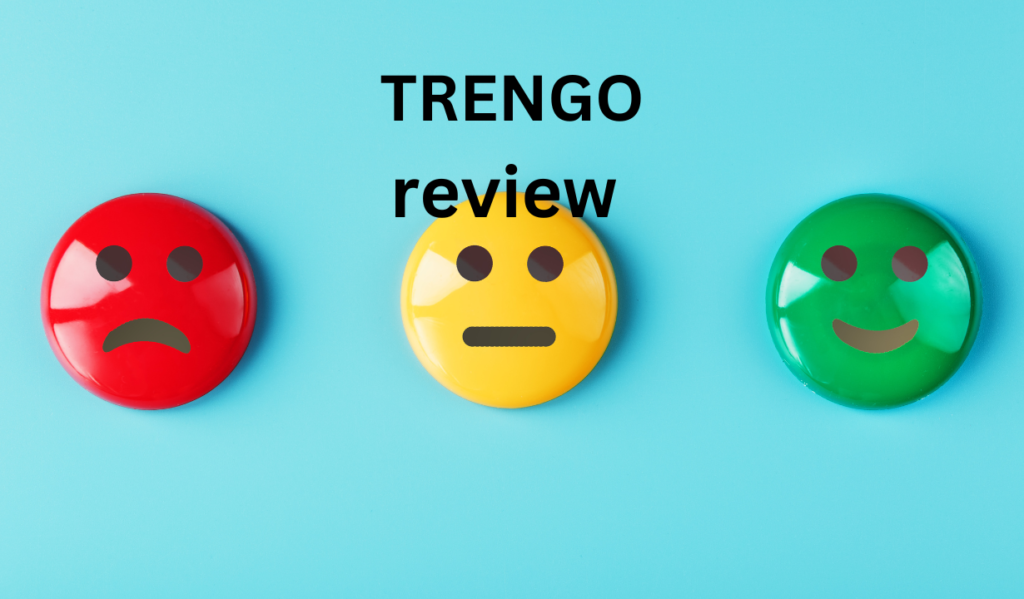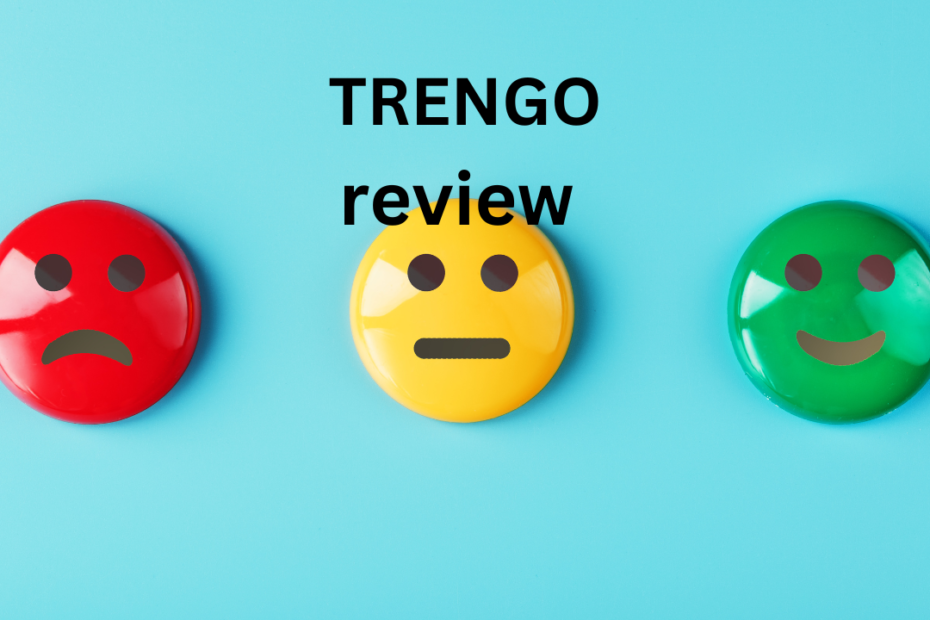As businesses continue to evolve in the digital landscape, customer communication tools have become indispensable. Trengo, a versatile communication platform, promises to streamline interactions across multiple channels like WhatsApp, live chat, and email. In this Trengo review, we will explore Trengo’s pros and cons, delve into its pricing structure, assess its user interface, discuss its workflow capabilities, and analyze insights from customer service reviews to provide a comprehensive overview of Trengo in 2025.
What are the Pros and Cons of Using Trengo?
Key Advantages of Trengo
Trengo stands out in the market for its robust functionality and user-friendly interface. One of the key advantages of Trengo is its unified inbox, which allows businesses to manage all customer interactions from a single platform. This feature enables teams to have meaningful conversations without switching between different applications. The integration of chatbots and automation tools further enhances the efficiency of workflows, allowing businesses to automate repetitive tasks and focus on more complex customer needs. Moreover, Trengo’s analytics capabilities provide valuable insights into customer behavior and team performance, helping organizations to refine their strategies effectively.
Common Disadvantages Highlighted in Trengo Reviews
Despite its many strengths, Trengo is not without its drawbacks. Many reviewers have pointed out that while the chatbot functionality is impressive, it can sometimes be inconsistent. Users have reported instances where the robots provided incorrect or irrelevant responses, which caused frustration among customers. This inconsistency can lead to customer dissatisfaction and may damage a company’s reputation if not addressed promptly. Additionally, some users have noted that the pricing plans, while competitive, may become costly for smaller businesses, particularly if they require multiple subscriptions to access advanced features.
User Feedback on Trengo’s Performance
User feedback on Trengo’s performance has been mixed. While many companies have reported that using Trengo for the last four years has significantly improved their customer service experience, others have expressed concerns about the reliability of the platform during peak times. Reviewers have highlighted that the support team is generally responsive and helpful, but there are instances when resolution times can be longer than expected. This inconsistency in support can be a pain point for businesses that rely on quick responses to maintain customer delight.
How Does Trengo’s Pricing Structure Work?
Overview of Trengo Pricing Plans
Trengo offers a variety of pricing plans designed to cater to businesses of all sizes. The pricing structure is straightforward, with options that range from basic to advanced features. Each plan is priced per month, allowing organizations to choose a subscription that aligns with their specific needs and budget. This flexibility is one of the reasons why many companies find Trengo appealing, as it can scale with their growth.
What is Included in Each Subscription?
Each subscription plan includes different features tailored to meet various business requirements. For instance, the basic plan typically includes access to the unified inbox, essential chat functionalities, and limited automation features. On the other hand, higher-tier plans might offer advanced capabilities such as comprehensive analytics, full chatbot integration, and priority customer support. This tiered structure ensures that businesses can select a plan that offers the best value based on their operational needs and desired level of customer engagement.
Cost Comparison of Trengo with Other Services
When comparing Trengo pricing with other software services in the market, it is evident that Trengo provides a competitive edge. While some platforms may offer lower prices, they often lack the extensive functionality that Trengo provides. Moreover, the ability to integrate with multiple channels like WhatsApp and email makes Trengo a cost-effective solution for businesses looking to streamline their communication efforts. Consequently, many organizations have found that the investment in Trengo pays off in terms of improved efficiency and customer satisfaction.
Is Trengo’s User Interface Really User-Friendly?
First Impressions: Navigating the Trengo Interface
The user interface of Trengo is designed to be intuitive and user-friendly, making it easy for new users to navigate the platform effectively. Upon logging in, users are greeted with a clean layout that features an organized dashboard, displaying all channels of communication at a glance. This seamless navigation is crucial for teams that require quick access to customer queries and responses, thus enhancing their overall productivity. Many reviewers have praised this aspect of Trengo, noting that it significantly reduces the learning curve for new team members.
Customizability of Trengo’s User Interface
Another significant advantage of Trengo’s interface is its customizability. Users can tailor the layout to suit their workflow preferences, allowing them to prioritize the most relevant information. This flexibility is particularly beneficial for businesses that handle a high volume of customer interactions, as it enables them to streamline their processes effectively. The ability to customize the interface not only enhances usability but also contributes to a more personalized experience for users, fostering a sense of ownership over the platform.
Feedback from Users on the Usability of Trengo
Overall, feedback from users regarding the usability of Trengo has been overwhelmingly positive. Many have expressed that the streamlined interface makes it easy to automate tasks and manage customer interactions without feeling overwhelmed. However, some users have suggested that while the platform is generally user-friendly, occasional updates can lead to confusion if not communicated effectively. Ongoing training and support are essential to ensure that all team members can leverage the full potential of Trengo.
How Can Trengo Improve My Workflow?
Automation Features that Enhance Efficiency
One of the standout features of Trengo is its automation capabilities. By utilizing AI-powered chatbots and automated workflows, businesses can significantly enhance their operational efficiency. These automation tools help to reduce response times and ensure that customers receive timely assistance, thereby improving overall customer satisfaction. For example, automated responses can handle frequently asked questions, freeing up customer support representatives to focus on more complex inquiries. This strategic use of automation not only improves service delivery but also optimizes team productivity.
Integrating Trengo with Other Tools
Trengo’s ability to integrate with various tools and platforms is another way it can improve your workflow. The software offers an open API, allowing businesses to connect Trengo with other applications they already use. This integration capability means that companies can consolidate their customer support efforts, making it easier to track interactions and manage customer relationships. By working with Trengo, businesses can create a cohesive ecosystem that enhances collaboration and information sharing across departments.
Real-Life Examples of Workflow Improvements with Trengo
Numerous organizations have reported that using Trengo has made their workflow a lot smoother. For instance, a mid-sized e-commerce company shared that by implementing Trengo’s unified inbox, they were able to reduce their average response time by over 50%. This significant improvement not only enhanced customer experience but also allowed their support team to handle a higher volume of inquiries without compromising service quality. Such real-life examples underline the effectiveness of Trengo in streamlining operations and delivering exceptional customer support.
What Insights Can We Gain from Trengo Customer Service Reviews?
Quality of Customer Support Provided by Trengo
The quality of customer support provided by Trengo is frequently mentioned in reviews. Many users appreciate the promptness and helpfulness of the support team, which is crucial when businesses encounter issues that require immediate attention. Trengo’s support staff has been recognized for their expertise and willingness to assist users in navigating the platform effectively. However, it is essential for Trengo to maintain this high level of service as they continue to grow, ensuring that every user feels valued and supported.
Common Issues Faced by Users and Resolutions
Common issues highlighted by users in Trengo reviews often revolve around the integration of chatbots and the need for more comprehensive training materials. While many users find the chatbot features beneficial, some have experienced challenges with functionality, leading to inconsistent performance. Trengo has actively worked on addressing these concerns by providing updates and enhancing their knowledge base, which helps users troubleshoot common problems independently.
Trengo’s Response Time and Effectiveness
Response time is a critical factor in customer service, and Trengo has generally received positive feedback in this area. Users have reported that the support team is quick to respond to inquiries, with many issues being resolved within a few hours. However, there are occasional reports of longer wait times during peak periods, which can lead to frustration. Continuous improvement in response times will be vital for Trengo as they aim to uphold their reputation as a leading customer service platform.
Kore AI Review-Technology & XO Optimization Insights
InsertChat Review: Build Chatbots for 24/7 Engagement!
Observe AI Review 2025: Features, Pricing, Alternatives & Insights

Q: What are the main advantages of using Trengo?
A: Many users report that Trengo has made their workflow a lot more efficient, allowing for better organization and management of customer interactions across various channels like WhatsApp and live chat.
Q: How does Trengo’s integration with other platforms work?
A: Trengo offers seamless integration with multiple platforms, making it easy to combine customer service efforts across different channels. This integration helps in streamlining communication and enhancing customer experience.
Q: What do users say about Trengo’s customer service?
A: Reviews indicate that Trengo’s customer service is generally responsive and helpful. However, some users have reported issues with the quality of support during peak times.
Q: How user-friendly is the Trengo interface?
A: Many reviewers highlight Trengo’s user-friendly interface, which makes it easy to navigate and manage conversations. Users appreciate features that ensure it’s easy to organize their customer interactions.
Q: Can I write a review of my experience with Trengo?
A: Yes, users are encouraged to write a review of Trengo based on their experiences. This feedback can help others in deciding whether to use the service.
Q: What are the pricing options for Trengo?
A: Trengo offers various pricing plans that cater to different business needs. It’s advisable to verify the current pricing on their official website, as it may change over time.
Q: How effective is Trengo‘s chatbot feature?
A: While many find Trengo’s chatbot feature useful for handling initial customer inquiries, some users have expressed concerns about the robots being extremely inconsistent and causing issues with customer service.
Q: What are some potential drawbacks of using Trengo?
A: Some users have reported issues such as the flowbot being inconsistent and causing damage to their company reputation by responding to customers inappropriately. It’s crucial to evaluate these potential drawbacks based on individual needs.
Q: How long do users typically use Trengo before reviewing it?
A: Users who have been working with Trengo for quite some time, often around four months or more, typically provide detailed reviews based on their extensive experience with the platform.
Q: What are the analytics features like in Trengo?
A: Trengo also provides analytics features that help users track performance and workflow efficiency, allowing for informed decisions based on customer interaction data.



